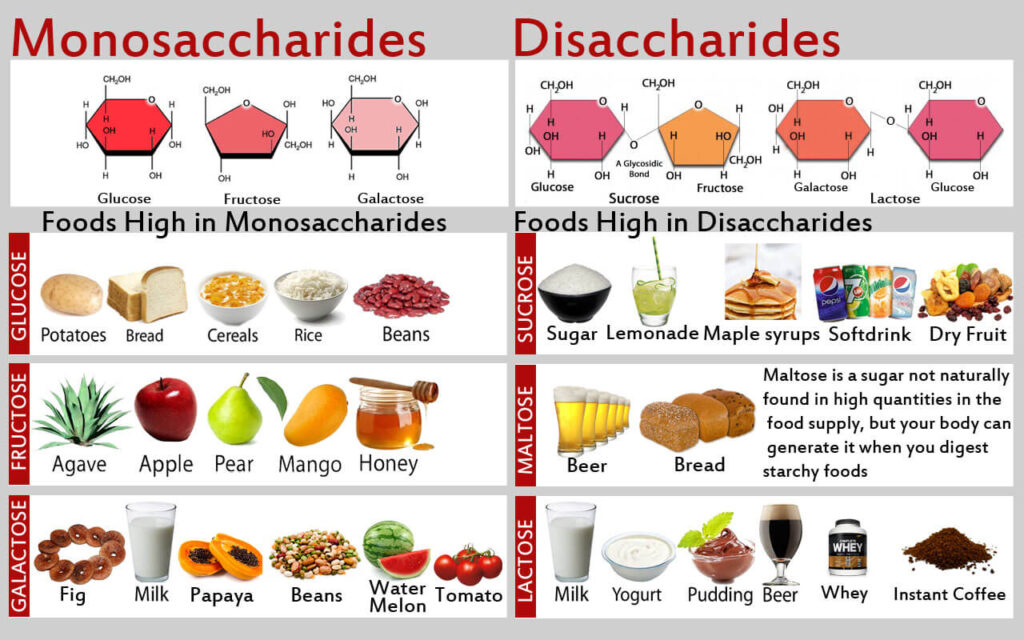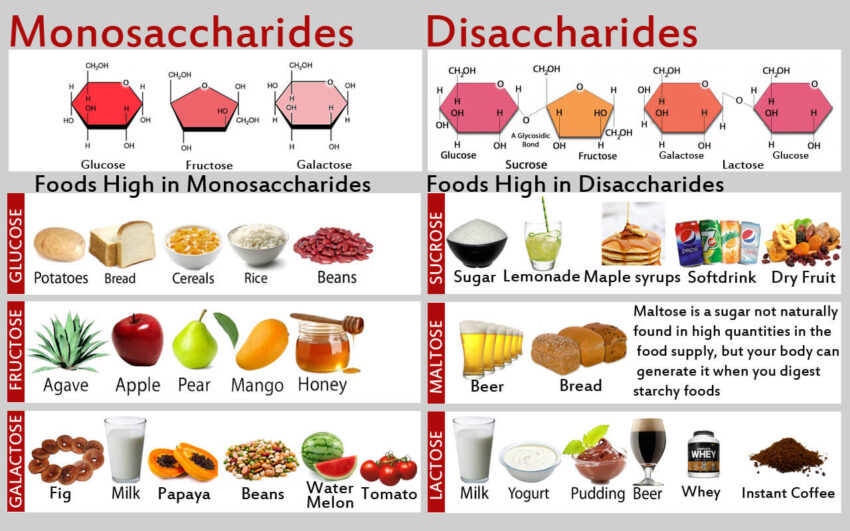
Sweet Surrender: A Comprehensive Guide to Foods That Have Sucrose
Sucrose, commonly known as table sugar, is a disaccharide composed of glucose and fructose. It’s a ubiquitous ingredient in our diets, found naturally in many fruits and vegetables and added to countless processed foods. Understanding which foods that have sucrose is crucial for managing blood sugar levels, weight, and overall health. This comprehensive guide will delve into the various sources of sucrose, both natural and added, empowering you to make informed dietary choices.
Natural Sources of Sucrose
Many whole foods naturally contain sucrose, contributing to their sweetness and nutritional value. While these sources also provide vitamins, minerals, and fiber, it’s still important to consume them in moderation.
Fruits
Fruits are a significant source of natural sucrose. The sweetness of fruits is primarily due to the presence of fructose, glucose, and sucrose. The specific amounts of each sugar vary depending on the type of fruit and its ripeness. Here are some examples:
- Mangoes: Known for their tropical sweetness, mangoes contain a considerable amount of sucrose.
- Bananas: As they ripen, bananas develop a sweeter flavor due to the conversion of starches into sugars, including sucrose.
- Pineapples: These tropical fruits are another delicious source of sucrose.
- Apples: A classic fruit, apples contain a mix of fructose, glucose, and sucrose, contributing to their crisp sweetness.
- Oranges: While known for their vitamin C content, oranges also contain sucrose, contributing to their overall flavor profile.
Vegetables
While generally lower in sugar than fruits, certain vegetables also contain sucrose. These vegetables offer a variety of essential nutrients and can be a healthy part of a balanced diet.
- Carrots: Carrots are surprisingly sweet, and a portion of that sweetness comes from sucrose.
- Sweet Potatoes: As their name suggests, sweet potatoes contain a significant amount of natural sugars, including sucrose.
- Beets: Beets are naturally sweet and contain a notable amount of sucrose, which is why they are sometimes used in sugar production.
Added Sucrose in Processed Foods
The primary concern regarding sucrose consumption often stems from its addition to processed foods. Added sugars contribute to excess calorie intake without providing significant nutritional value. Identifying foods that have sucrose as an added ingredient is key to making healthier choices. [See also: The Impact of Added Sugars on Your Health]
Common Culprits
Many processed foods contain significant amounts of added sucrose. Here are some of the most common culprits:
- Sugary Drinks: Sodas, fruit juices (even those labeled as “natural”), and sweetened teas are often loaded with sucrose. These beverages provide empty calories and can contribute to weight gain and other health problems.
- Candy and Sweets: This category includes a wide range of products, from hard candies and chocolates to gummies and pastries. They are typically high in sucrose and offer little to no nutritional value.
- Baked Goods: Cakes, cookies, pies, and other baked goods often contain large amounts of added sucrose to enhance their flavor and texture.
- Breakfast Cereals: Many breakfast cereals, especially those marketed to children, are heavily sweetened with sucrose. Always check the nutrition label to identify cereals with lower sugar content.
- Sauces and Condiments: Surprisingly, many sauces and condiments, such as ketchup, barbecue sauce, and salad dressings, contain added sucrose.
- Processed Snacks: Many processed snack foods, like granola bars, crackers, and chips, contain added sucrose.
Decoding Food Labels
To identify foods that have sucrose as an added ingredient, carefully examine the nutrition label. Look for the term “sugars” under the “Total Carbohydrate” section. This number includes both naturally occurring and added sugars. To determine if sucrose is specifically added, check the ingredients list. Sucrose may be listed under various names, including:
- Table sugar
- Cane sugar
- Beet sugar
- Brown sugar
- Corn syrup
- High-fructose corn syrup
- Honey
- Maple syrup
- Agave nectar
Remember that ingredients are listed in descending order by weight, so if any of these sweeteners appear near the top of the list, the product is likely high in added sucrose. [See also: Understanding Nutrition Labels: A Guide to Healthy Eating]
The Impact of Sucrose on Health
While sucrose is a natural component of many foods, excessive consumption, particularly from added sugars, can have detrimental effects on health. It’s essential to be mindful of the foods that have sucrose and to consume them in moderation.
Weight Gain and Obesity
Excessive sucrose intake contributes to weight gain and obesity due to its high calorie content and its potential to disrupt appetite regulation. Sucrose-rich foods often provide empty calories, meaning they offer minimal nutritional value while contributing significantly to overall calorie intake. This can lead to a calorie surplus, which the body stores as fat. Moreover, high sucrose consumption can interfere with the hormones that regulate hunger and satiety, leading to overeating.
Type 2 Diabetes
Consuming large amounts of sucrose, especially from sugary drinks and processed foods, is strongly linked to an increased risk of developing type 2 diabetes. High sucrose intake can lead to insulin resistance, a condition in which the body’s cells become less responsive to insulin. Insulin is a hormone that helps glucose (sugar) enter cells for energy. When cells become insulin resistant, glucose levels in the blood rise, potentially leading to prediabetes and eventually type 2 diabetes.
Heart Disease
High sucrose consumption is also associated with an increased risk of heart disease. Studies have shown that excessive intake of added sugars can raise triglyceride levels, increase levels of LDL (bad) cholesterol, and lower levels of HDL (good) cholesterol. These changes in blood lipid profiles can contribute to the development of atherosclerosis, a condition in which plaque builds up inside the arteries, increasing the risk of heart attack and stroke. Additionally, high sucrose intake can contribute to inflammation throughout the body, further increasing the risk of heart disease.
Dental Health
Sucrose is a major contributor to dental cavities. When you consume foods that have sucrose, bacteria in your mouth feed on the sugar and produce acids that erode tooth enamel. This erosion can lead to the formation of cavities and other dental problems. Regular brushing, flossing, and limiting sucrose intake are essential for maintaining good dental health. [See also: The Connection Between Diet and Dental Health]
Strategies for Reducing Sucrose Intake
Reducing sucrose intake can significantly improve your overall health. Here are some practical strategies to help you cut back on added sugars:
- Read Food Labels Carefully: Pay close attention to the nutrition facts panel and ingredients list to identify foods that have sucrose as an added ingredient.
- Choose Whole, Unprocessed Foods: Focus on incorporating more whole, unprocessed foods into your diet, such as fruits, vegetables, lean proteins, and whole grains. These foods naturally contain less added sucrose.
- Limit Sugary Drinks: Replace sodas, fruit juices, and sweetened teas with water, unsweetened tea, or sparkling water with a squeeze of lemon or lime.
- Cook and Bake at Home: Preparing your own meals allows you to control the amount of sucrose added. Experiment with using natural sweeteners like stevia or monk fruit in moderation.
- Be Mindful of Portion Sizes: Even healthy foods containing natural sucrose should be consumed in moderation.
- Choose Healthier Snack Options: Opt for snacks like nuts, seeds, yogurt (unsweetened), or fresh fruits and vegetables instead of processed snacks high in added sucrose.
Conclusion
Understanding which foods that have sucrose is a critical step toward making informed dietary choices and prioritizing your health. While natural sources of sucrose can be part of a balanced diet, it’s essential to be mindful of added sugars in processed foods. By carefully reading food labels, choosing whole, unprocessed foods, and implementing strategies to reduce sucrose intake, you can significantly improve your overall well-being and reduce your risk of chronic diseases. Remember, moderation and awareness are key to enjoying the sweetness in life without compromising your health.
